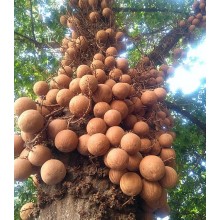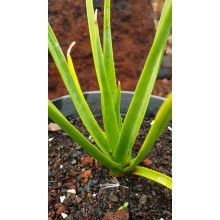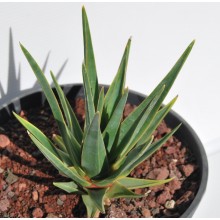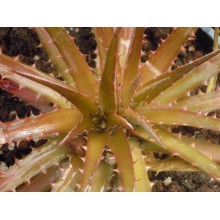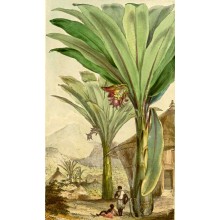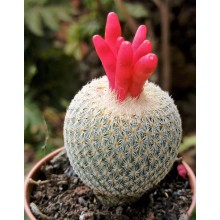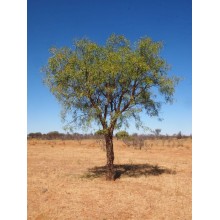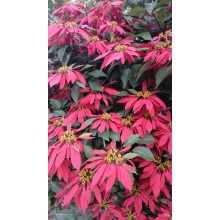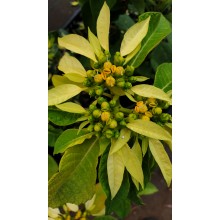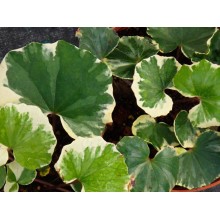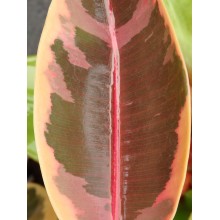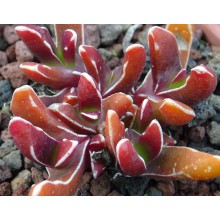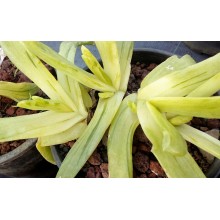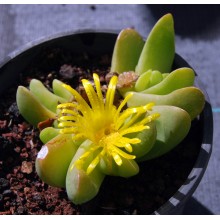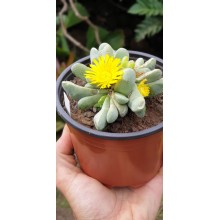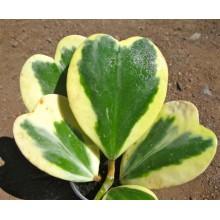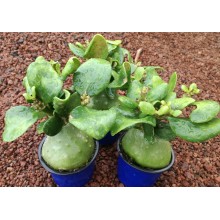Spécial Il y a 77 produits.

Sur canarius.com, nous essayons de repousser les limites du domaine de la botanique. Sur notre boutique en ligne, nous tentons de facilité le processus achat/vente des plantes partout dans le monde. C’est pourquoi, nous cultivons les espèces les plus communes ainsi que les plantes les plus spéciales, comme nous pouvons le voir dans cette section.
Sous-catégories
-
Plantes résistantes au froid
Voici notre sélection de plantes qui peuvent supporter un certain froid. Certaines ne vont pas résister au froid et supporteront un gel léger, mais d'autres supporteront bien les gelée dans les climats froids. Elles sont tous très différentes mais méritent d'être essayées parce que tous ces plantes tropicales ont des exigences non tropicales. Elles vont sûrement prospérer en extérieur dans des climats méditerranéens côtiers ou dans une serre chauffée légèrement où le gel ne passera pas.
-
Plantes insolites
Ceci est notre sélection de plantes extraordinaires. Elles sont tous très différente et quelque peu insolites. Il y a des airplants, des bananes rouges, des pierres vivantes, les plantes à feuilles noires, des cactus zig-zag et tous les types de plantes accrocheuses et des morceaux de conversation. -
Plantes panachées
Les Plantes panachées ont des feuilles rayées ou tachetées de couleurs attrayantes. La "variegation" des plantes se produit pour de nombreuses raisons. Le plus souvent, cela est dû a une erreur génétique qui apparaît de temps en temps dans la nature. Un panaché blanc est le résultat de l'incapacité d'une plante à produire de tout pigment dans cet endroit. Une production moindre de la chlorophylle pigment permettra de faire apparaitre de l'orange, jaune et vert lumineux apparaissent, ou même des nuances de rose, rouge et violet. Ces plantes sont plus lentes à pousser que leurs cousines vertes et souvent plus coûteuses. Nous offrons des Agaves, Aspidistras, broméliacées et beaucoup de plantes succulentes panachées.
-
Plantes résistantes à la sécheresse
Dans cette section, nous avons rassemblé toutes ces plantes qui sont adaptées aux conditions arides ou sèches. Normalement, la majorité de ces espèces, qui poussent dans des environnements secs, sont cireuses, succulents, feuillues, collantes, à épines et même plus petites que le reste.
Parmi les plantes résistantes à la sécheresse, vous pouvez retrouver plusieurs espèces comme: le Pithecellobium doux, la Ruta graveolens, le Syzygium cordatum, le Tamarindus indica et bien d’autres.
-
Couroupita guianensis - Cannonball Tree
Couroupita guianensis - Cannonball Tree
This extraordinaty exotic ornamental tree is a real people stopper. It profusely produces intensely fragrant red and pink flowers.
50,00 € -
Dracaena cinnabari
Dracaena cinnabari
The most extraordinary dragon tree is the one from the island of Socotra. Here we offer 4-5 years old seedlings.
83,40 € -
Dracaena cinnabari- LARGE
Dracaena cinnabari- LARGE
The most extraordinary dragon tree is the one from the island of Socotra. Here we offer 5-6 years old seedlings.
287,00 € -
Dyckia fosteriana rubra
Dyckia fosteriana rubra
This is a supreme clone of Dyckia fosteriana, with bronze coloured rosettes. It is a cold-resistant bromeliad from the rocky mountains of Paraná, in South Brazil.
19,50 € -
Ensete ventricosum - Abyssinian Banana
Ensete ventricosum - Abyssinian Banana
This "mountain banana" comes from high-elevation tropical Africa and bears enomous leaves with a solid red rachis. It grows well in warm temperate and Mediterranean climates. It is not a true banana of the genus Musa, so its fruits are not edible. Nevertheless, in Africa the corms are regularly collected and eaten.
57,30 € -
Epitelantha micromeris
Epitelantha micromeris
Very ornamental small cactus from the SW USA and Mexico, coated with white unharmful spines. It blooms in late winter with pale pink flowers that are soon followed by some very attractive frutis, which are dark pink, glossy and last form months!
10,80 € -
Erythrina vespertilio - Bat's wing coral tree
Erythrina vespertilio - Bat's wing coral tree
This Australian Erythrina is incredibly attractive shrub to small tree, with unmistakeable bat-wing trifoliate leaves. It is graceful and easy to grow. It grows in dey areas and develops a thick base: a caudex which grows very thick both underground and above ground. It is suitable to pot colture and the caudex can be exposed as a potted "bonsai".
119,80 € -
Euphorbia pulcherrima 'Tall Wild Type'
Euphorbia pulcherrima 'Tall Wild Type'
This is the most classic tall heirloom poinsettia which is so widespread in the old gardens of the Canary Islands and the Southern Mediterranean.
24,50 € -
Euphorbia pulcherrima 'Tall Wild Type' YELLOW
Euphorbia pulcherrima 'Tall Wild Type' YELLOW
This is the most classic tall heirloom poinsettia which is so widespread in the old gardens of the Canary Islands and the Southern Mediterranean.
24,50 € -
Farfugium japonicum 'Argenteum'
Farfugium japonicum 'Argenteum'
This classic clone of Farfugium is still unsurpassed in beauty. Leaves show many different hues of white. This variegated 'Argenteum' adds light to a shady spot in the garden. It has been around for more than a century but it is still only grown by specialized nurseries because it is slower than other cultivars.
24,50 € -
Glottiphyllum difforme
Glottiphyllum difforme
This is the most beautiful and least known species in the genus Glottiphyllum. Few collectors grow it and no pictures in the web show the beauty of well-grown plants.
16,80 € -
Glottiphyllum neilii
Glottiphyllum neilii
The "King of the Glotts" is said to be the largest of all the species in the genus Glottiphyllum. Leaves can get quite red when somehow stressed, It is easy to grow, and just as the rest of the genus Glottiphyllum it is chiefly winter-growing but it does not have a true resting season.
10,70 € -
Glottiphyllum oligocarpum
Glottiphyllum oligocarpum
This is a very attractive compact and blue glotty. Leaves are short and waxy and can look blue to grey. The flowers are so large that they cover the whole rosette.
12,00 € -
Heliconia mariae
Heliconia mariae
Hanging heliconia of unusual beauty, with velvety-hairy pink inflorescences and gorgeous foliage, which is glossy and marron underneath.
64,20 € -
Heliconia x 'Pendulata Spotty Stems'
Heliconia x 'Pendulata Spotty Stems'
We selected this hybrid here in Tenerife. It is a particularly nice and hardy cross between Heliconia subulata and H. pendula, which are two cool-hardy species, good for the subtropics.
27,76 € 34,70 €Prix réduit ! -
Hoya kerrii 'Variegata'
Hoya kerrii 'Variegata'
A variegated clone of the popular heart-shape leaved Hoya kerry. Easy to grow even in tough conditions, thanks to its succulent leaves.
28,50 € -
Hydnophytum moseleyanum
Hydnophytum moseleyanum
This caudex ant-plant is an epiphytic plant that develop a huge chambered stem, providing shelter for some species of ants.In turn, these ant-plants, or myrmecophytes, receive nutrients and protection from the ants. The caudex of Hydnophytum moseleyanum can get quite large, up to 20-40 cm in diameter, and the bark is grey and smooth (much like the one of...
17,20 €
Pour le moment, il ya peu de produits dans cette catégorie Spécial




















